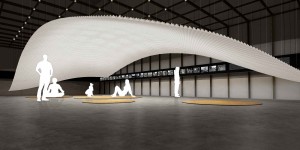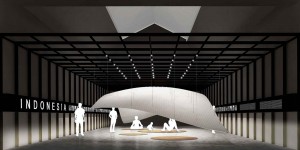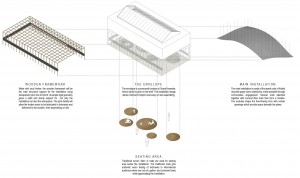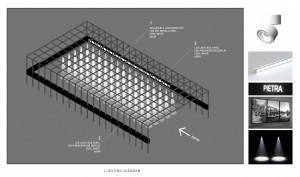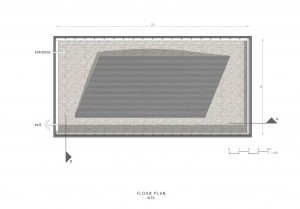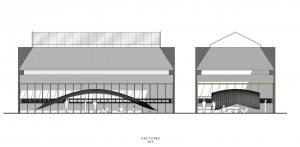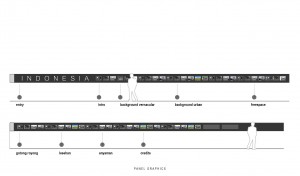UNITY IN ARCHITECTURE - VENICE
'Unity in Architecture’ is possibly the best-suited proposition for Venice Architecture Biennale (VAB) 2018 for Indonesia Pavilion. It exposes the correlation between VAB 2018’s theme, ‘Freesight’ and Indonesia contemporary architecture. It focuses on the rights and responsibilities of the citizen in this universe at its relation with social, economy, culture, and any other affliations through architecture. It explores how architecture can understand and shape the civil society. The versatile pavilion also induces the need of further critical research and practice in architecture at the intersection of heritage local wisdoms and values appreciated in the current urban society. It is increasingly difficult to find appropriate answers in the current trend that empasis on maximazing profit partnering with idiocracies which led to dramatic urban changes whose dominated with the absence of public parks and purposeless capitalistic objects. Made of thousands of folded paper, the installation embraces the spirit of ‘gotong rotong’ or togetherness and uses local resources. Its free flowing form suggests the warmness of Indonesia hospitality and shade the ground where people can converse freely. The installations has become a democratic space that promotes Indonesian positive social value and encourage harmony regardless of the background or social standing to international scene.
FREESPACE & INDONESIA
Venice Architecture Biennale (VAB) 2018 theme, Freespace and Indonesia seemingly share the same conundrums. It is about generosity, thoughtfulness, and engagement at the core of the agenda amidst the exploitation of commercialism within architecture. Profit oriented projects has consumed the diversity, belonging, and continuity in architecture that based on people, history, time, space, social culture, and relevancy of architecture in the current society.1 ‘Cupcake’ and ‘copycat’ architecture has shaped most big cities in Indonesia and has received fierce critics from local practitioners. Local values and wisdoms have been sidelined in favor of a universal solution fits for all. Furthermore, construction worker arguably is the most marginalized in contrast to the enormous value of the project.
Titled “Unity in Architecture”, the pavilion seeks to provoke a new paradigm in contemporary architecture regardless its geographical locations through deep observations in Indonesia history, social, and cultural perspective. It emphasize on widely known ‘gotong royong’, a coined term for achieving something with togetherness which used to be plausibly the most popular method of construction dated thousand years back in Indonesia. ‘Gotong royong’ is still pertinent in Indonesia neighborhoods where a number of communities try to embrace it and organize for local urban intervention. However, the number is still relatively very small compares to the humongous population of the country. It still greatly resonates and increasingly crucial while the current political landscape suggest otherwise. The pavilion encompasses freedom of thoughts that underlying the pavilion and weaving the archaic with the contemporary.
‘GOTONG ROYONG’: VERNACULAR ARCHITECTURE
Ranging from the great Candi Borobudur to local traditional house, the ‘gotong royong’ ethos or ‘the spirit of togetherness’ is deeply rooted in Indonesian history and cultue. In Java particularly, it is depicted from the traditional Javanese village, where labour is accomplished through reciprocal exchange and the villagers are motivated by a general ethos of selfishness and concern for the common good. It is ingrained in day-to-day Javanese village life where the members of the community are expected to take part in communal duties such as repairing canals, dams, irrigation systems, and joining work parties for the construction of road and public buildings. Such participation is not part of compliance to civil law, regulations, or policies, but based on expected societal values such as reciprocity, family link, and localised sef-efficiency.1
Kampung Ruteng Pu’u which is located 1,200 meter above is another example where local people building their housing with ‘gotong royong’ spirit by using directly available material resources.2 Not only applied on building houses or villages, ‘gotong royong’ is also applicable for moving house tradition in Bugis ethnic’s culture, where the men literally lift up the house and move it. Once it is done, everyone will gather around and eat food provided by the women. To conclude, the culture of ‘gotong royong’ promotes positive social value such as social harmony and emphasises on the positive notions of mutual family support and deep community level activity.
‘GOTONG ROYONG’: RELEVANCY
Although the spirit of ‘gotong royong’ is waning in recent days where social ties have become less cohesive as the society becomes more urbanized1, it has evoluted over time and amplify its value in contemporary contexts. In 2006 when earthquake stroke Yogyakarta, ‘gotong royong’ is a relied and preferred method of disaster management approach rather than aid and initiatives from Indonesian government.2 The reconstruction of Ngibikan Village in Yogyakarta essentially implementing the ‘gotong royong’ spirit and shortlisted for Aga Khan Award for Architecture. The new homes which are based on vernacular architecture with innovative modifications to resist future earthquakes have rebuilt the physical fabric of their community and rebuild the togetherness.3 While in Jakarta the government and the residents of Tanah Tinggi built the so called ‘kampung deret’ or ‘row of village’ in 2013 based on the same ethos.4
The spirit of ‘gotong royong’ has earned acknoledgement where UNESCO select Banjarsari as a pilot project in search of sustainability based on ‘gotong royong’ practices. A 3.3 sq km of neighborhood with more than 1,000 residents boasts green swathes which provide shade and made room to grow flowers, fruits, vegetables, and herbs, which is fertilized using organic waste from the kitchen.5 An oasis in a chaotic city of Jakarta through community engagements. ‘Gotong royong’ has proven it is even more imperative for now to nurture the value for common goods and enhancing solidarity among ethnic groups in this fragile planet.
Team: Raymond W, Frans T

